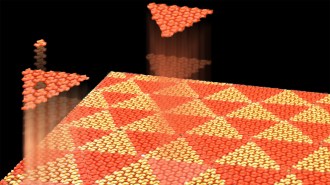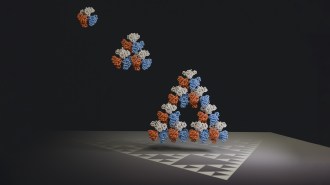Physics
There’s math behind this maddening golf mishap
Math and physics explain the anguish of a golf ball that zings around the rim of the hole instead of falling in.
Every print subscription comes with full digital access
Math and physics explain the anguish of a golf ball that zings around the rim of the hole instead of falling in.
We summarize the week's scientific breakthroughs every Thursday.

Shape and symmetry help determine where a leaf lands — and if the tree it came from can recoup the leaf’s carbon as it decomposes.

Chemists identify a single molecule that naturally tiles in nonrepeating patterns, which could help build materials with novel electronic properties.

Ne’Kiya Jackson and Calcea Johnson have published 10 trigonometric proofs of the Pythagorean theorem, a feat thought impossible for 2,000 years.

The winding loop touches every point without crossing itself and could help make a unique class of atomic structures more efficient catalysts, scientists say.

The protein assembles itself into a repeating triangle pattern. The fractal seems to be an accident of evolution, scientists say.

Computer scientists made progress on a decades-old puzzle in a subfield of mathematics known as combinatorics.

The einstein tile can cover an infinite plane only with a nonrepeating pattern. A material based on it has features of both crystals and quasicrystals.

About 10 percent of the fruit in a tilted market display can be removed before it all crashes down, computer simulations show.

Notable feats include discovering a planet-eating star, extracting RNA from an extinct animal and more.
Subscribers, enter your e-mail address for full access to the Science News archives and digital editions.
Not a subscriber?
Become one now.